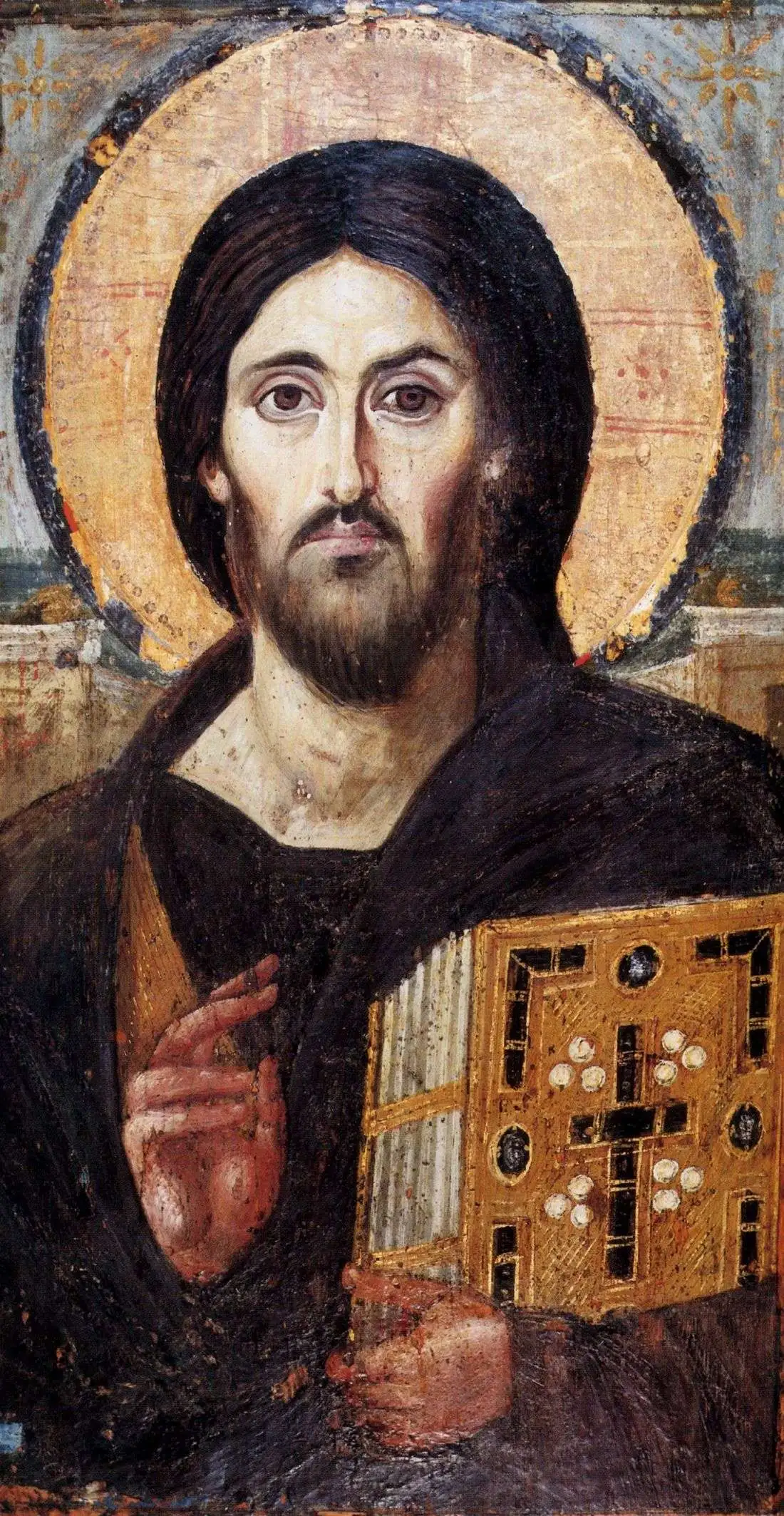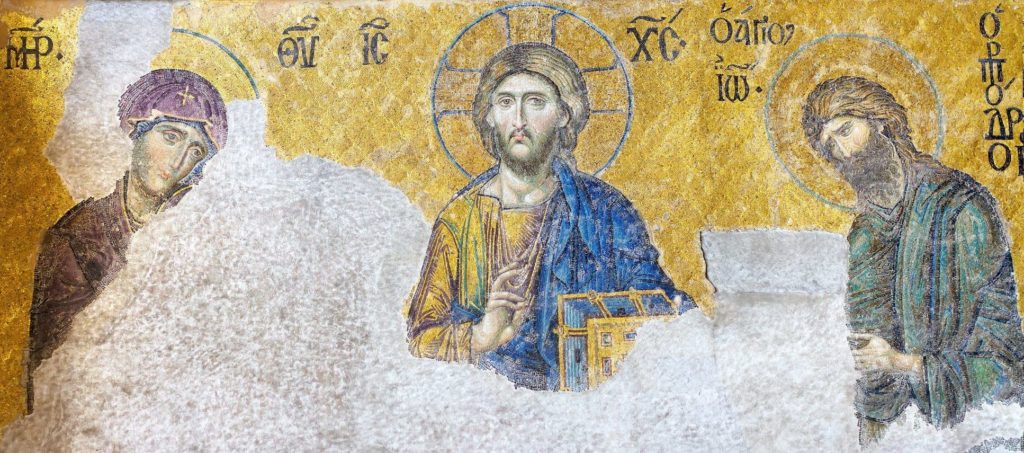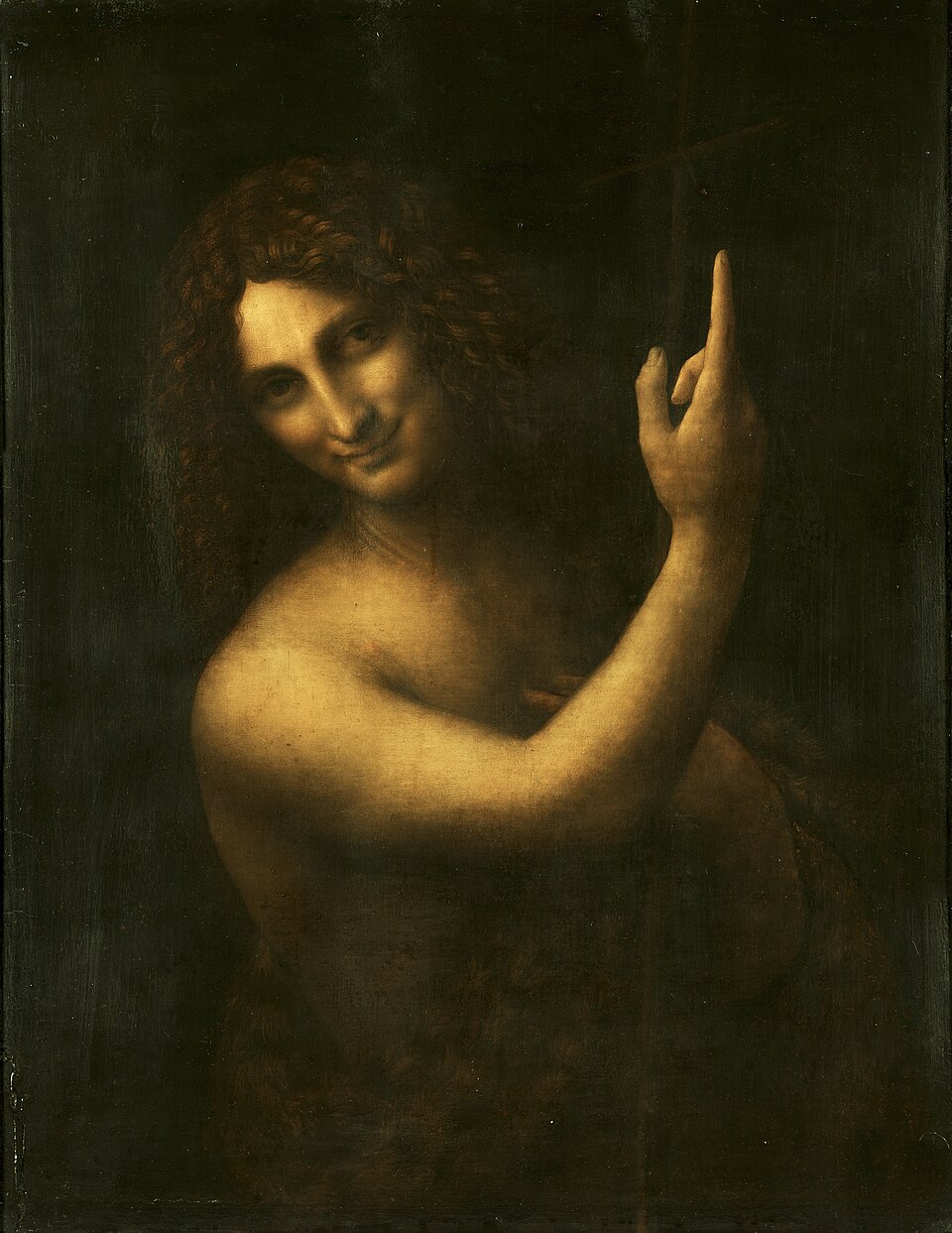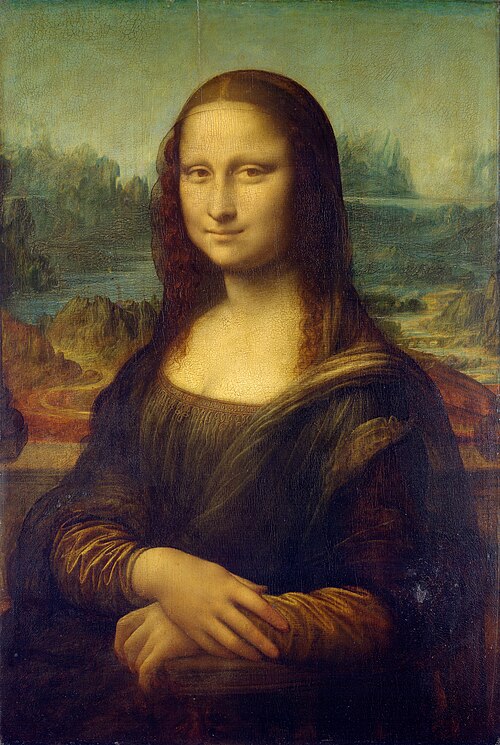
Language The One or Mona Lisa ( Her Kisike Dil Mein, Tür Lenk). According to this, Semitic languages such as Hebrew, Aramaic, and Arabic and possibly also Greek, Armenian, Syriac, and many others actually emerged as a result of distortions or variations in the reading and understanding of holly texts orginally in single language. Jesus, Moses, and possibly other prophets miraculously spoke this language from birth. This original language is very similar to Turkish and modern Turkish spoken around Turkey and middle east spread as result of realization of this probably before Seljuks. Languages like Sanskrit and Persian are probably derived from more ancient lost holly texts. Languages like English are just mixtures developed over time with influence of mulitple languages. Finnish also may be phonetical variant of original language. Japanese also gramatically almost same with Turkish. But source not just has to be holly texts because human brain wired to learn language patterns regularly. Similarity between grammars of Turkish and Japanese and many other language indicates this.
Sun Language Theory proposed by Mustafa Kemal Atatürk, is very similar. Somewhat like non-theistic explanation. Turkish Tan root alone is almost enough to understand that Turkish is probably closest language to the original. Sounds may be important. It is probably a not coincidence that many English words are aligned with Turkish roots over time by shits in sounds in some cases.
Suggest reading this example before diving cold Turkey because there are many speculative parts in this theory page and you may feel it is based on hinges or speculative possibilities. Even though overall picture is pretty clear.
¶ Historical and Etymological Artifacts
It is speculated that the miraculous speech exhibited by various prophets as babies or children was referred to at the time with the Turkish word "Bakış" ("to look at each other" or “gaze” or “look”; -ış is reciprocal suffix thus former is ideal meaning.). The hand gesture in the iconic portrait of Jesus is also thought to symbolize the word “Bakış” (as an example, consider eye contact in sign language). It is suggested that the word “Bekos”, reportedly uttered by babies in the linguistic isolation experiment allegedly conducted by the Pharaoh, and the Ancient Greek word “bakis”, may have originated from the Turkish word “Bakış” (Greeks pronounce this exactly as "bakis"). Since according to Quran and Torah, Moses was taken from his family as a baby by Pharaoh and later had difficulty speaking with his own people—leading him to use Aaron like translator—it is being considered that the babies in Pharaoh’s experiment might have been Moses and Aaron. (See Exodus 4:14–16.)

The reason this miracle is associated with the word “bakış” is said to be that these prophets, as babies, would mutter this word in a state of astonishment when making eye contact with others. This is because people often mutter the word that is most strongly evoked in moments of sudden surprise. Eye contact is a highly exciting event for babies. (Although normal babies get used to it by the age of two or so, for a baby who doesn’t see many people, eye contact with strangers can remain a source of intense excitement and astonishment for a long time. By the time normal babies begin to speak, they are already used to making eye contact.) Later, those who heard this word might have used it when describing the event to others, leading to this miracle and these prophets being associated with the word “bakış”. In Ancient Greek, the word bakis has precisely this meaning. In fact, the confusion caused by this dual meaning has been noted in various sources. (Also check: 🪬)

While only one language for each evolved from the Torah and the Quran, many different languages emerged from Bible due to Christians being hidden under Roman oppression and dispersed to various regions. Considering that some fled deep into Africa, the extent of the pressure may have been even greater than what current historical sources convey. Very few writings from that era have survived. In later periods, the Crusades targeted Christian groups who had stopped hiding themselves. During the Crusades, there were also incidents suggesting that early Christian records might have been in the possession of European religious authorities.
Although the Roman Empire systematically destroyed such material, the fact that no Bible manuscript from before 300 CE has been found in Turkey is a difficult issue to explain. Some fragments have been discovered in neighboring countries.
In the early period of Christianity, it is known that hidden Christian groups used various coded writings. The general defining characteristic of these groups was concealment. This left statistically unexplicible amount of trace behind. For example, the language of African Christians who claim to possess the original Gospels is called Ge'ez, pronounced very similar to Turkish word for secret/hiding “giz”. In Turkish, the word “kirpi” (porcupine) named so because it protects itself with spikes. Similarly, the same name has been given to an armored vehicle produced in Turkey. See: crypt. This word is significant because the connection of other words derived from this root to Christianity might seem unclear at first glance. But there is more:

Modern understanding of Hebrew texts are not correct even word spacings. Paleo-hebrew letter “𐤀” normally probably doesn't have any sound and used to seperate words ancient texts didn't have spaces but because later spaces added and functionality of this letter forgotten. This letter especially caused problem with understanding holly texts. And it is associated with meanings of not understanding and cryption because “𐤀” it resembles eyelesh which pronounced as “kirpik” in Turkish. It also resembles trimming tool and also to trim derives from “kırp-” root in Turkish. What a coincidence. Also blinking is called “Göz kırpmak” (from same root.). So especially because this letter not understood because it assumed to have a sound like other letters. The issue of not understanding those texts referred as something like “kirpik” (eyelesh in Turkish) and over time the term crypto derived related to encryption. Utility of this letter “𐤀” still not known today. And assumed to be only vowel in Hebrew.
“𐤀” letter corresponds to latin Alpha. And words like alphabet and elephant derives from it. Alphabet because it is complete set of letters and elephant is probably because of its size. In Quran corresponding letter used to split compound words (Not exactly.). In Quron name of this letter means something like "time" like 5 time (interpreted as thousand.). So it is something like max. Also: Alps. Mountain of evidence. Or maybe Elephant in the room. Don't confuse letter and its name. It has names like Aleph/Eliph/Alpha but those are names of the letter. Not what letter directly corresponds to in texts. In Paleo Hebrew it probably named as so because animals got fat enough to be slaughtered called that.
(Also sacrificial animal referred by this word in semitic languages. It is also used in Turkish as loanword from Arabic. Starts with very similar sound to aforementioned Turkish root Kırp-; And there is another Arabic loanword in Turkish sounds similar to this root: “garip”. Which means odd, strange, unfamiliar. I don't think how they written is really important since nobody really knew how to read when those meanings established. Rather how they written later probably shifted their sounds. Also coincidentally many most common Turkish boy names starts with "Alp" which probably originates from this letter and one of the most common girl name is its Arabic correspondent pronounced like Eliph. This is also interesting. Hebrew word for relating sacrificial animal "קרבן" may be meaning something like “to God” and may be corresponding to Turkish "Tanrıya". May be the only word understood somewhat correctly in the entire Torah.)
(In ancient Arabs and Jewish communities slaughtering ox or a camel to eat in case Arabs was seen too primitive of an act or those animals were considered to be somewhat holly beyond their economical value. Thus they were slaughtered in the excuse of sacrificing to GOD. This seems like actually also was the case in India in the past. This was the case in a vast region and practice of sacrifice was important part of daily life and sacrificial animal was probably referred by name of this Aleph/Alp letter.)
According to this publication conducted in Japan on 11 month old Japanese babies. The sound “kipi” matches with spiky shapes and the word “moma” matches with roundy shapes. In Turkish: "kirpi" means porcupine, “kirpik” is eyelash. “meme” means boob. “mama” used to refer baby or pet food. ("Diz kırmak" means to bend the knee. "kır-" root also means to broke. “kır” also means grassy field.) (However measurements too technical and it seems like in another study they conducted later, under some measurements there wasn't a link between “kipi” and spiky shapes. However that measurement is more indirect and because “moma” is related to food it may be uncomparably triggering for various regions which may be causing confusion when interpreting the results. Researchers doesn't take this into account. They are measuring trolling of a baby by telling it food is coming without knowing and comparing its reponse to something not situmulating for the baby. And actually it seems like when compared to other studies the disparity between responses only explainable by this. Crazy enough they picked up a word that Turkish people say when feeding babies. (Other studies usually compares “kiki” and "bouba"). Result of this study probably only explainable by Turkish but they miss it because they are focused on comparing words and situations. They have no idea they may be saying most triggering word for a baby. ChatGPT tells me when compared to results of studies measuring responses of babies to human faces, measured response to “moma” in this study is at comparable range which is actually not something seen before in various similar trials. At the moment I don't really understand technical details. Hoping to update as I understand better.)
It seems like at the beginning babies use repeated sounds for symmetricaly objects. So it is clear they do some naming. MaMa is attributed to mother because it is the first word. Mothers think baby refer to themselves. BaBa and DaDa also clearly conscious words they use to refer familiar symmetrical beings but maybe without seriously distinguishable logic since they could be referring to any property that is common in various objects. It seems like they do even call baba to objects like bottle or ball. Obviously because they are familiar with those. Ha sound probably used when they realize or remember something. Hi is deriving from. Turks continue to use it as it is. Because Turkish word for mother is based on a historical special name babies that talk early don't say it. For babies that doesn't talk early on what they say doesn't related. Jesus's original name probably refers to avoiding this symmetrical naming. For instance babies probably add -y sound to end of words that refer to symmetrical objects or make it daad instead of dada. When they distinguish this concept. In Turkish moon is called “Ay”. Probably directly related to this concept. Mirror is “Ayna”. Maybe because this concept realized upon changes in shape of the moon. Dad is named daddy after it. Although the sound of y letter is complicated and doesn't really sound like Turkish word for moon. Many people make this sound when they stuck thinking when talking. Maybe the ones that realize it by themselves continue the tradition. This is probably mostly an old generation thing though no baby sees moon that much anymore. “Ay” sounds exactly same as english “I”. “We” resembles that sound usually old people make when they stuck while thinking. At this points things kinda possibilities varies. F/W sound may be relating re-positioning. It happens again and again. Everytime baby is lost in the moon. Because it is only variable for hours baby loose its focus to moon and turning point carves a memory. When it suddenly not able to recognize it anymore.
The Turkish word for “mother,” anne, may trace back to Jesus’s grandmother, who was named Anne, because he frequently observed his own mother call her by that name.
Also the fact that crypt starts with "cry" is whole another topic but very important in context of Quran. If this all is coincidence, everything is. Indeed is but with what?
¶ What's with the squint-eyes

It is not clear yet but in Turkish this condition called “şaşı”. To surprised is “şaş-ır-mak”. Those meanings are literal translations of their almost exclusive usages today. (Bakış <=> şaşı. As claimed that they uttered bakış because they got surprized by eye contact.) Interestingly Christians, or most English speaker, usually say “Jesus” when they get surprised.
Also in Da Vinci's Jesus depiction Salvator mundi he is holding a transparent glass ball. It is probably related to Jesus's original name which probably related to Turkish words “ay” and “ayna” which means "moon" and “mirror”. In Quran both eye and name of Jesus starts with Ayn (ﻋـ) letter. Actually in some instances it seems like Jesus's name interpreted as eye and “we told Maryam to rest her eye” understood instead of “we told her to take a good care of Jesus.” It is important to note that this letter looks at right. In Turkish right is "sağ" and we call Jesus, "İsa". (ğ is not important when it is last letter.) (Though this is may not be correct pronouncation.) (English word “eye” sounds exactly same as Turkish word "ay" which means moon.)
There is another meaning this word has in Quran in mainstream translations. Which is spring. Turkish word eye “göz” exactly used for this meaning in Turkish. “Gözlü su” : Water with a source. Ironically it may be misinterpretation under Turkish influence even though what we claim is Quran is originall Turkish.( Source may be related to its meaning but not directly water spring.) Turkish influence is overwhelming especially for important words. There is almost no exception. For example "salt" means pure in turkish. Which lead NaCl to be named salt in other languages. Arabs interpretated a word used in context of preservation as salt and called it "salat". Repeated over and over again especially in set phrase “Preserving salat”. They obviously didn't even have a perception of distinct language until Umayyads. Because of Emperor Nero there is a word that means fire and pronounced as "nar/nara/nari/naru". This one is very hilarious. Humor for alcohol (Though today they pronounce it as hamr, wovels are not that important. Standardized later in history.). In some instances what seems like Umayyads demonizeds words related to Turkish. But to very limited extent. Still there is already a word pronounced as “Tur” and considered holly without a solid meaning attributed (Judged to mountains and valleys sometimes.). Because of belief on sacredness of texts there wasn't probably almost never attempts to intentionally corrupt texts. Just exploitation of ambiguity. According to classification of corpus.quran.com in one instance a word that derives from same root used with meaning with what is just exactly means in Turkish. "Stages". Although I am not sure mainstream etymological view recognise it. Which is something just checked to inform you not that I care. It directly related to word Türk and Türkçe (Turkish). Related to repeatedness of regularity. Like construction of meaning completes and starts independently in a definite way. Not ambigiously context dependent like English. Though not figured this out really yet.
¶ Da Vinci's letter to Ottoman Sultan
There is a debate on whether the letter is translation or original. But there is nothing that indicates it is a translation and speculation goes that it was probably forgotten by scribes. Failed to find sufficient information on this.)
He begins his letter with saying “I, your servant”. Was he? Or was he trying to hint something? To Sultan? I don't think so.
From around 1503, which is the year both this letter sent and he started Mona Lisa, it seems like he was a valuable slave transferred from one authority to another. Requested to be given back in some instances like an asset. Most of the times conditions relating supervision considered to be tied to political conjecture.
Maybe this shifted right eye motive (John the Baptist painting) wasn't direct copy from Jesus depictions. Maybe it was to tell he was under supervision. Also the figure is maybe pointin up to symbolyze authority. And he really looks like involuntarily posing.
It seems like he had years long middle east trip yet there is also no information about this (*).
¶ Mona Lisa

Model is probably Da Vinci's mother yet it seems like so far only claimed by a historian named Sigmund Freud. Because of models similarity to Da Vinci himself it is even claimed that model was based on Da Vinci himself. She was most probably from Azerbaijan and her mother language was probably Turkish and the name “Mona Lisa” is pretty straightforward anagram for single language. Pretty much like Mono Lisan (Lisan is Arabic loanword for language in many languages. Very common. At least known in all Muslim countries.). Her lips are intentially painted to look like fastened. Traditionally judged to a weird smile. Background is not completed even after long years possibly because he couldn't gather enough information about background he was drawing. Because it was somewhere around Azerbaijan and Iran border.
Mona Lisa portrait is literally famous with her “Bakış” (looks). Notice how everything evolves around this term.
About background of Mona Lisa portrait.
(According to literature Elisabeth considered to be formed from Hebrew El + Sheva words, El considered to stand for God and Sheva is seven (relating sufficiency) or oath. In Quran an oath frequently mentioned in context of sons of Israels. In Turkish promise also means word/speech but rather in general sense of expression not specifically for talking or writing. Both in Hebrew and Turkish 7 derives from a root that means enough. Although this dissaction is probably wrong. Hebrew term rabbi is associated with 4, Jesus seems to be associated with 5, someone from Mohammed's family probably Ali al-sajjad associated with 6 and 7 possibly will be the last one considering in both Turkish and Hebrew it has meaning related to enough. This is about the miracle of talking original language without artificially learning from birth. Not an orders about prophets. In Turkish 7 written as “yedi” derives from root “yet” related to both a meaning related to sufficiency and sense. “yedi” directly means "sense" although pronounced and written as “yeti” in modern Turkish. t/d doesn't make a difference in Turkish. Modern split. The root “yet” also used with meaning of coming to help. This meaning derives from meaning sufficiency probably related to competency. There is more on this at this page.)
For more historical and speculative anectodes: Historical Events Related to Language The One Theory (First two title are like continuation.)
¶ Potential reasons for why it is not known:
- To bots religion is just politics and potentially a political weapon so people considered to posses it targeted throughout history. Especially by people who trained to posses power. And literate people intentionally targeted many times because they didn't stay silent. (There are many instances in Islamic history where prominent people, even close relatives of prophet, masaccered yet nobody really knows exactly why and this happens shortly after prophets death. Although this is still an improvement considering Christianity is solely based on death of a prophet.) This also explains why Turkish spread over easily in areas with weak central authority and within small communes. (Steppe people).
- In the past, written texts could be read by very few people, and the language taught by the prophets was forgotten before it could spread in periods without prophets or was manipulated by political authorities.
- Due to Turkish being a completely regular language, Turkish texts are more prone to being read in different ways.
- People tend to focus on topics they can generally understand and specialize in. They tend to avoid subjects that are hard to prove, seem unlikely, or are difficult to research—especially complex topics that appear unsolvable.
- People are psychologically and behaviorally highly troubled. (Those who oppose what is clear without any reason should question themselves and find out why.)
- People engaged in related fields tend to be more obsessive and fanatical compared to others, and other people don't really care much and tend to trust those individuals.
- People are unable to think independently. Or perception of reality surrounded by surrounding. And unfortunately biggest obstacle is not current understanding of religions but tales of ancestors which is called History. People are brainwashed by history. Which is just possibilities without possibility attached. The most popular religions is not Islam, Budaism or Christianity. It is obviously the History. And all other religions are different sects of this "History". Which is mostly shaped by European historians on all kind of drugs. At the least history definitely forces human brain to take shourcuts and embrace assumptions by overwhelming it. Because historical teachings are not perceived different than most of the informations that humain brain processes about events that happened without direct perception. And because it is thought be culturally unacceptable to not now about history most people force themselves through this quagmire. Even the people who think they are skeptical of historical information cannot comprehend its influence on their thinking. I guess Peganum Harmala was historically used in this context. (You need to be very carefull about dosage as it is not like tea or something.)
¶ Some points should led you to think this throughly
- In Semitic languages, words are formed by derivation from simple roots, and while this can be understood when reading the text, the pronunciation often makes it difficult to distinguish these roots. Which make one question how did this language developed in first place.
- There is a general consensus that the holly texts that gave rise to these languages were read in very different ways and only later became standardized.
- There are many unexplained phenomena in the understanding of these holy texts today.
- There is no reason not to consider this theory but only assumptions.
- These languages appeared on the historical stage alongside their respective holy books.
- These languages has gender system. Something without any utility. Existence of this system even when everything put aside is enough to be suspicious of something is wrong.
¶ State of the Theory and Mixed Notes
_(1881-1938)_in_westers__sfa003017837.jpg)
This theory can only be clarified, if it is correct, by decoding the Turkish reading of the sacred texts or by understanding the sacred texts regularly. As of now, there is no evidence that these texts can be read in a way that supports this theory.
Regarding Torah, assuming text haven't been changed except minor defetcts if it was originally written in assumed single language it should be really not that hard to read. At least that was my assumption. However it is obviously very ambigious and exhausting task. Because current understanding is totally fiction. (Current way of reading holly texts first underfits and than adds vowel marks to extend anyway so it is hilarious that if you think this is a crazy theory. A judgement totally based on delusional assumptions. Academy's approach is totally like let's see what those cavemen tried to carve so they don't have much expectations for logic nor consistency. This is the classic approach for all ancient texts. Meanwhile they speak a langauge of with gender system and as irregular and inconcistent as one can get. So their standards are pretty low when comes to those aspects.)
Unlike Torah, Quran seems somewhat understandable. At least integrity is very clear. As editor don't know about New Testaments. But integrity is beyond real concern. Even though Koine Greek has some interesting sides. There are so much text to evaluate although I have limited attention and for obvious reasons I focused Quran. It seems like Quran has two layers. First layer is symbolic and current Arabic understanding based on it (Irregular. Or not regular enough and even sentences seperated inaccurately. And actually even in this symbolic layer Turkish is foundational knowledge because associations between symbols already exists in Turkish language to some extent.). However current understanding is obviously not very accurate. Other layer is probably straightforward Turkish.
This whole situation is like a joke. There may be religious or not religious texts which can be read in Turkish straightforwardly. Logically ancient texts written paleo-hebrew alphabet and its mirrors should be straightforward Turkish. But since no one really exactly knows this Turkish and how its been read exactly situation is complicated. Syriac is also probably was a alphabet used to write Turkish. Mongolian seems like maps one to one to Arabic. Almost more similar to original Quranic caligraphy than modern Arabic. Although not to imply any of those are correctly pronounced seems like Mongolian alphabet has similar quirks as Arabic. (Not intirinsically.) Many alphabets that considered to be omitting vowels are very likely that originally used to write Turkish. Because Turkish vowels are context dependent although mixed. Probably something like infliction in some cases and also mix of something like vowel harmony. To distinguish roots in words. Although this was the case for many alphabet and would be historically really absurd. But yet history is not really important there isn't a logical explanation for this situation. If vowels weren't important in past where did all those langauges come from. Taking history to account is only to assess possibility of which texts may be in this language. Other than that history is joke especially when it comes to the languages. It has been obviously manipulated since existance. Especially any source from Europe since even though there is nothing intentional going on today yet still their thinking is crippled by modern languages and mocked by historical fictions. This is nothing but a modern religion almost all humans share.
For Quran situation may be complicated there could be double layers especially because something like this directly mentioned.I havent looked at Hebrew texts other than Torah maybe situations is different for Psalms for instance. Maybe important first step is distinguishing parts that make sense. Current understanding of Quran is mostly based on teachings of Judaism. At least it is way beyond something we can describe as influence. Also Islamic culture heavily inherits from Judaism. Torah doesn't really make sense at all. Quran somewhat makes sense if you read translation and don't think about how that meaning derived.
There are patterns my brain can register but I don't understand exists in Quran. On MPH (ritalin) my heart rate sometimes rises up to 130 bps (not really up to but hits around 120-130 straight and stays around there. And definitely not something like fight or flight thing. Actually alprazolam (Really nice drug unnecessarily restricted because of ignorancy spreaded by US and EU. Mostly based on stupid retrospective studies. Ironically because it works unhealthy people likes it meanwhile healthy people doesn't like because of depressive effect and it is associated with unhealthiness in those ridiculous studies. Called confounding by indication. Especially in recent years important repairing publications had been published though. Water may be more toxic than this drug. Not an exeggeration. (If you calculate over theraputic doses like 1.5-2mg daily for this one.) There is a reverse correlation between opioid addiction and availability and prevelance of benzodiazepines among countries. In Turkey for instance prescriptions rates are ridiculously low especially for sleep and anxiety. Inferior and dangerous drugs are used. Especially for insomnia.) cause stimulant effect (based on heart rate) if I feel bad after taking ritalin. Not that normally I combine them.) and this only happens when I am examining kufic texts (Maybe not necessarily only kufic, kufic is initial writing style of Quran.). Normally it can just stay around 80 depends on what I do. Recently have been fatigued and can't use it much and I was overall stagnant. I guess under many stimulants it becomes clear what is holly texts or not. This is probably the reason of war on drugs. Unfortunately world is controlled by ignorants who cannot comprehend intentions of evil people and evil people. (Not to say drugs are not dangerous. Even though depends on the definiton of dangerous. If I talk based on your definition of dangerous, ofc heroin and also maybe meth are very dangerous. But there are so much unnecessary bans. People who ban those drugs probably knows nothing about them. And even if we talk about heroin it is very contraversial point. Beucase there are always more people who are not able to use those drugs than who abuse them. Although describing someone as abusing a painkiller is straightforward playing the GOD. Like they are aware what people feel. Based on current understanding of Quran I guess it is told that to use less than what saturates. If you are in pain you should continue feeling that. If you are in depression you shouldn't forget what you are doing is probably meaningless. Although most people don't need a drug for this. I may be little bit too libertarian about human rights. In terms of mainstream perception of advancement of humanity it is probably not that bad world is not managed by real libertarians and stays in semi-slavery. Somtimes ignorance is bless. Though for whom? To who?) ( Drugs are probably important potential context for holly texts. Especially “Baldıran”: Valerian and “Üzerlik”: harmala. )
This is actually obvious reality. Or at least appears to be incomparably correct than what people assume. I even feel weird because put Theory in the title. Though obviously it has many speculative parts which are not all true. Like I mentioned all those texts overriden by diaritric marks and dots and things. So it is not like people really able to read and understand those texts. And people of knowdledge hated throughout history and killed in first opportunity. This is not directly because they knew something but probably they were saying things people didn't really wanted to hear. Religion was about authority so default case shouldn't give survivability of truth much chance. Throughout history religious authorities attacked antyhing that may threaten their authority. Especially in case of Crusades, targets beyond thousand kilometers were targeted. Also language deprivation experiments done in Europe are very suspicious. There are only few but either childs dies or there is nothing about results left behind but gossips.
This is obviously probably meant to be like this to distort perception of reality.
Especially into this last section I am adding things in very unorganized fashion. It requires a good 𐤀. (Finish/Trimming)